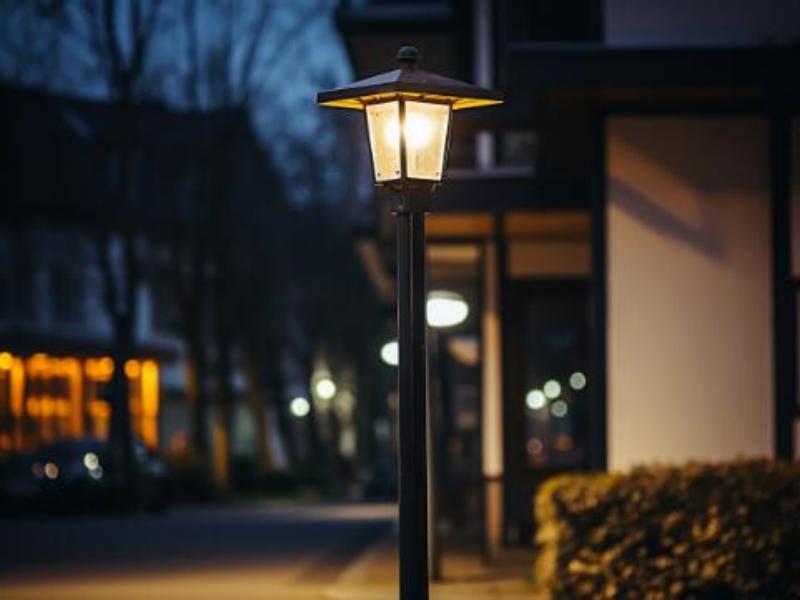Residential street lights and ordinary street lights serve a similar purpose of providing illumination for roads and public spaces, but there are notable differences between the two types of lighting systems. In this discussion, we will explore the key distinctions between residential street lights and ordinary street lights, considering factors such as design, functionality, location, and lighting requirements.
Design and Aesthetics
One of the primary differences between residential street lights and ordinary street lights lies in their design and aesthetics. Residential street lights are typically designed to complement the architectural style of residential neighborhoods and blend into the surrounding environment. These lights often feature decorative elements, such as ornate poles, lantern-style fixtures, and softer illumination to create a welcoming and visually appealing atmosphere. In contrast, ordinary street lights, which are commonly found in commercial and urban areas, tend to have a more utilitarian and functional design. They may feature streamlined or modular construction and prioritize brightness and uniformity of illumination to meet the demands of higher-traffic settings.
Functionality and Light Distribution
The functionality and light distribution characteristics of residential street lights and ordinary street lights also differ based on the specific needs of the areas they illuminate. Residential street lights are typically designed to provide sufficient illumination for sidewalks, residential streets, and local community spaces. These lights are often equipped with shielding or light-diffusing features to minimize light pollution, glare, and spillover into nearby homes. In contrast, ordinary street lights are optimized for broader coverage and higher intensity lighting to accommodate larger roadways, major intersections, and commercial districts. The distribution patterns and intensity of light from ordinary street lights are engineered to enhance visibility and safety in areas with higher vehicular and pedestrian traffic.
Location and Surroundings
Another distinguishing factor between residential street lights and ordinary street lights is their typical locations and the surrounding environments. Residential street lights are commonly found in residential neighborhoods, suburban areas, and local streets that serve a primarily residential population. These lighting fixtures are designed to provide targeted illumination for homes, walkways, and community spaces while maintaining a harmonious relationship with the surrounding residential architecture and landscaping. On the other hand, ordinary street lights are prevalent in urban centers, commercial districts, transportation hubs, and thoroughfares that require consistent and high-intensity lighting to support commercial activities, traffic flow, and public safety. In these settings, the surrounding environment may include office buildings, retail establishments, public plazas, and bustling thoroughfares, which necessitate a different approach to lighting design and placement.
Regulatory Standards and Specifications
The variance between residential street lights and ordinary street lights also extends to the regulatory standards and specifications that govern their installation and performance. Depending on municipal or regional regulations, residential street lights may be subject to specifications that prioritize energy efficiency, light pollution control, and neighborhood aesthetics. These specifications could dictate factors such as the maximum allowable light output, color temperature, and potential restrictions on lighting technology. Ordinary street lights, due to their deployment in highly trafficked and commercial areas, may need to adhere to standards that emphasize uniformity of illumination, high color rendering index (CRI), and compliance with traffic engineering guidelines for visibility and safety.
Local Community Preferences and Considerations
The preferences and considerations of local communities and governing bodies also play a role in differentiating residential street lights from ordinary street lights. In residential areas, community stakeholders and homeowners may have input into the selection of lighting fixtures, with an emphasis on designs that align with the neighborhood’s character and contribute to a sense of community identity. This participatory approach may lead to the adoption of residential street lights that prioritize ambiance and visual appeal while meeting specific lighting needs. In contrast, the installation of ordinary street lights in commercial and urban areas may involve a more standardized and practical approach, driven by factors such as traffic management, public safety requirements, and the need for consistent, high-performance lighting solutions to support urban activities.
Conclusion
In summary, residential street lights and ordinary street lights exhibit notable differences in design, functionality, location, regulatory considerations, and community preferences. While both types of lighting serve the common goal of providing illumination for public spaces, their distinct characteristics reflect the varying demands of residential and commercial environments. By recognizing the unique requirements of each setting, planners, designers, and local authorities can tailor lighting solutions to effectively meet the specific needs of residential neighborhoods and urban areas, contributing to enhanced visual environments, safety, and quality of life for residents and visitors alike.
Post time: Jan-05-2024





